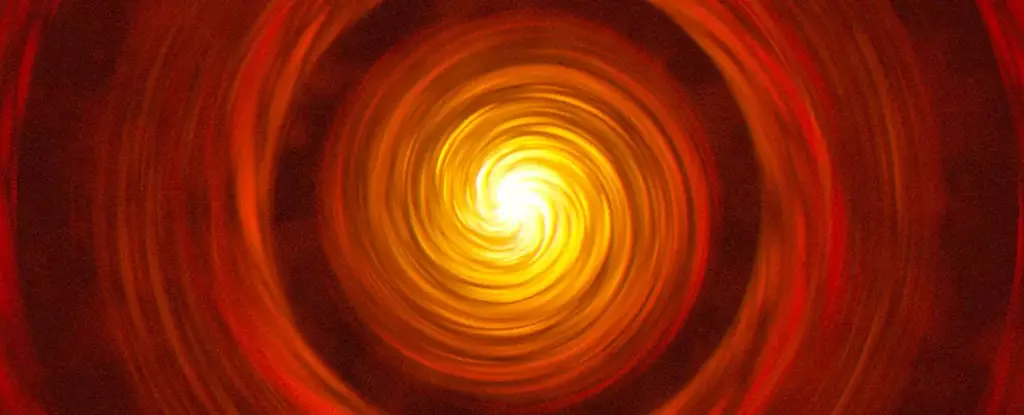The James Webb Space Telescope (JWST) has recently provided a significant piece of evidence that supports the long-standing hypothesis on planet formation. This breakthrough observation reinforces the theory of ‘icy pebble drift’, which plays a crucial role in bringing together the dust and rocks that eventually develop into planets similar to our own. The international team of researchers involved in processing the JWST data has found compelling evidence that supports the occurrence of icy pebble drift, shedding light on a critical aspect of the cosmic process.
In simple terms, icy pebble drift operates by tiny ice-covered particles colliding in the outer regions of a young protoplanetary disk. These collisions cause the particles to lose momentum, enabling them to gravitate towards the star and fall into a warmer zone. In this warmer zone, the frozen coating on the particles sublimates. Consequently, a ring of fine debris and water vapor forms, serving as a delivery service of building materials across a nascent solar system. This proposed mechanism is integral to the formation of rocky planets like those found within our own Solar System.
Despite the elegance of the idea, studying icy pebble drift has posed several challenges for astronomers. Previous attempts to ascertain the occurrence of this phenomenon were hindered by blurry images of distant starlight. These images were unable to definitively indicate the presence of water vapor and determine whether icy pebble drift indeed takes place. However, the team of researchers conducted a meticulous analysis by utilizing higher-resolution images captured by the JWST’s mid-range infrared camera. By observing and comparing two types of protoplanetary disks, namely compact and extended, they were able to generate more accurate results.
The Investigation of Compact and Extended Protoplanetary Disks
Compact protoplanetary disks consist of tightly-packed materials, while extended disks are larger and comprise distinct rings separated by pressure and gravity. Through their examination of both types of disks, the researchers discovered that icy materials can, in fact, migrate across protoplanetary disks. Interestingly, this migration process is more efficient in compact disks. Planetary scientist Colette Salyk from Vassar College emphasizes the significance of this finding, as it challenges the previous static representation of planet formation. The interaction between different zones in the disk has also been proposed to occur within our own Solar System.
By comparing the data from compact and extended disks, the research team observed a higher accumulation of water vapor at the ‘snowline’ of the compact disk. The ‘snowline’ is the point where icy pebbles lose a significant amount of vapor. This discovery strongly supports the idea that building materials can move inward across the disk, primarily in compact disks that do not require the traversal of large gaps. As the process of sublimation continues, the stream of pebbles from the outer regions provides both solid materials and water, serving as the foundation for the formation of new planets.
The breakthrough achieved in understanding the process of icy pebble drift and its role in planet formation is primarily attributed to the advanced capabilities of the James Webb Space Telescope. The high-resolution images captured by its super-sensitive instrumentation have paved the way for this fascinating discovery. With this newfound knowledge, astronomers can now delve deeper into the investigation of planet formation, armed with the assurance that icy pebble drift is indeed a fundamental aspect of the cosmic process. Astrophysicist Andrea Banzatti from Texas State University expresses the significance of the JWST’s contribution by stating, “Webb finally revealed the connection between water vapor in the inner disk and the drift of icy pebbles from the outer disk.”
The observation of icy pebble drift supported by the James Webb Space Telescope marks a significant advancement in our understanding of planet formation. This breakthrough confirms the long-standing hypothesis and provides valuable insights into the process by which planets like our own come into existence. The research team’s meticulous analysis of protoplanetary disks, the accumulation of water vapor, and the migration of building materials offer a remarkable glimpse into the dynamic and intricate nature of the cosmic dance that shapes our universe.



Leave a Reply